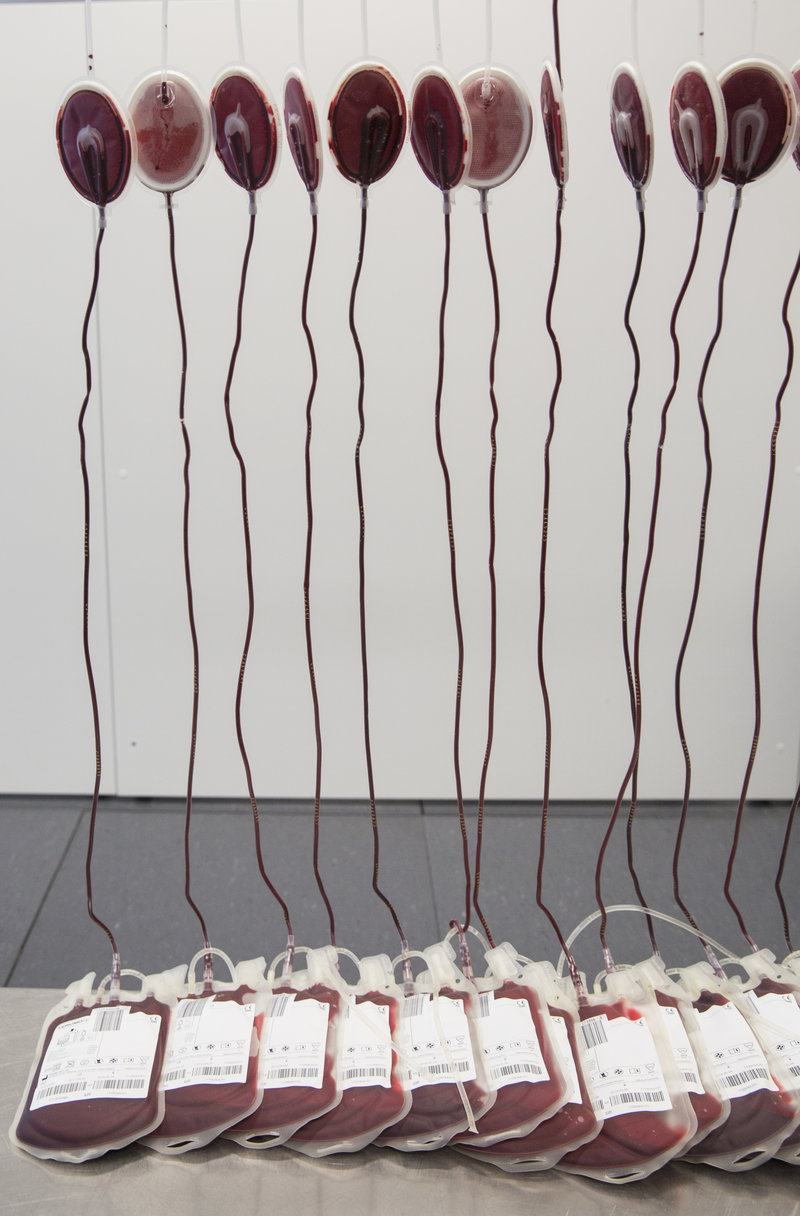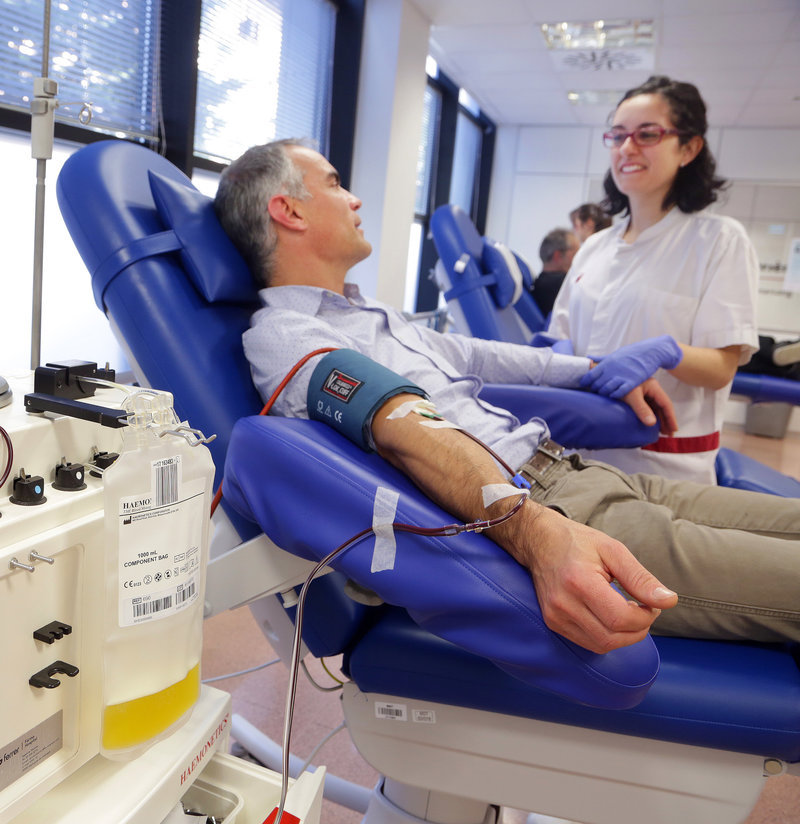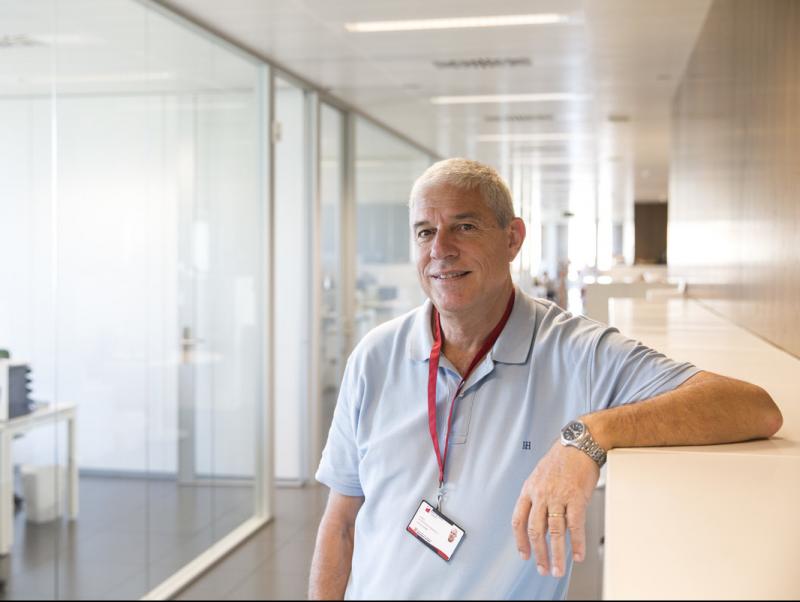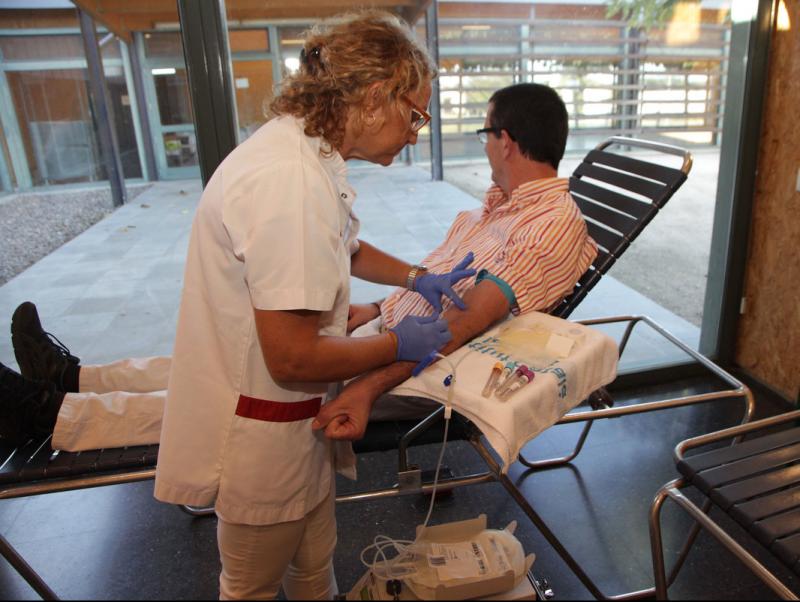The bank of life
Blood is a biological element that expires, which is why donations are needed on a regular basis and not just when there are accidents, catastrophes or attacks. More than 250,000 donations were made in Catalonia last year, but more are needed
When the Barcelona and Cambrils attacks took place in August, thousands of people rushed to health centres to donate blood, to the point that the Catalan Blood and Tissue Bank had to announce it had enough reserves to cover its needs at the time. It was a great show of spontaneous altruism, which broke the record for donations in Catalonia, with a 14% increase over the same period last year.
It is worth remembering that donations are always needed, however, as blood cannot yet be manufactured and is not only needed when there are accidents or catastrophes. In fact, it is common for 10% of the Blood Bank’s red blood cell units to go directly to oncological patients, who need them to be able to continue their treatment. To be even more precise, it has been calculated that about 50 children need blood in Catalonia every day, particularly for cancer treatment.
“In general, we have enough blood, but there are always times when donations go down, such as in the summer, when they fall by about 30%, while the amount of blood needed remains practically the same. In other words, illnesses and accidents don’t go on holiday,” explains Enric Contreras, director of hospital services at the Blood and Tissue Bank, taking a tour of the facilities of this strategic centre.
Integrating banks
Today’s bank came into being more than 20 years ago through the integration of all of Catalonia’s blood banks. Until then, each hospital kept and managed its own reserves and tried to cover its own needs, “until it became clear that it was much better to have a single centre that supplied all the blood components required at all of the hospitals around the country,” Contreras explains.
The parent organisation was the blood bank at Vall d’Hebron Hospital in Barcelona, which integrated all of the other banks in Catalonia. Seven years ago, however, it became clear that the premises were too small and the current building was built in the Poblenou district of Barcelona, which is where all the blood and tissue reserves from all over Catalonia are now stored. The key to ensuring enough supply of this “red gold” is blood donors, with the Blood Bank and various organisations such as the Federation of Blood Donors of Catalonia and the Red Cross working together to run the more than 4,200 collection campaigns carried out each year in Catalonia.
1,000 donations a day
Thanks to these campaigns and collections at permanent blood collection points in Catalonia’s main hospitals, 253,123 donations were made last year. Although that might seem like a high figure, if we bear in mind that 1,000 donations are needed every day to cover immediate needs, it no longer seems so much. “We are normally covered, but you can never let your guard down,” says Marc Ibars, president of the Federation, who also stresses the importance of attracting donors among young people.
It is for this reason that the Federation works together with the town councils to inform young people aged over 18 about becoming a donor. Other campaigns are aimed at finding donors among immigrant groups and also promoting other donations, such as breast milk, umbilical cord, tissue and organs (although in the latter case these are not stored at the Blood and Tissue Bank, as they are used for transplants immediately). “The Blood Bank is the professional part of the world of donation. We are the social and altruistic part”, says Ibars.
When the bags of blood arrive in Barcelona, the first task is to separate the three main components of the blood: red blood cells, platelets and plasma. Unnecessary components, such as leukocytes (white blood cells), are discarded. The blood is then analysed for safety purposes, and classified into different the blood groups. “The best known are the ABO groups, each of which can be Rh positive or negative. But apart from that, there are also about 400 different types of blood groups that are equally important in transfusions,” explains Enric Contreras.
Live cells
“If someone receives blood from an incompatible blood group, it can lead to very serious health problems. In fact, a blood transfusion is a little like a transplant, because you’re putting living cells from one person into another, and this procedure is governed by the laws of compatibility,” says Contreras. Control and safety are therefore vital throughout the process of handling and storing blood and its derivatives.
Once separated and analysed, all blood that meets the quality standards is stored in the bank. Red blood cells are stored at four degrees and have an expiry period of six weeks. Plasma is kept frozen below 25 degrees and expires after three years, whereas platelets are kept at 22 degrees and expire in five days. They must be kept in constant motion, since they are the component that allows our blood to coagulate. All blood components are then distributed to hospitals around the country when they are needed or sent to the pharmaceutical industry.
However, difficult situations can occasionally arise with uncommon blood groups and international help is needed. This year, for example, a young man of African origin in Girona had an operation and blood had to be requested from abroad, from France. The same is true vice versa, such as the case where a Swedish midwife had to receive blood from Catalonia because she also had an unusual group.
Catalonia’s pioneer system
The building housing the Blood and Tissue Bank of Catalonia (BTS), which was opened in 2010, is named after Frederic Duran i Jordà, the Catalan doctor who created the world’s first transfusion service, in Barcelona in 1936. It has an area of 16,000 square metres and more than 300 people work there. In fact, the Blood Bank employs some 650 people, but about half work in different hospitals around the country.
The BTS is unique in Europe because it uses a model known as “vein to vein”, meaning it controls the entire process from the blood leaving the donor until it reaches the recipient. In other places in Spain, banks only collect the blood and then send it to hospitals, while in Catalonia the entire route of this valuable resource is controlled by this single entity.
In parallel to the unification of the different banks, the Federation was also founded at the end of the eighties to bring all the existing associations under one roof. An integrated and networked process that has led to the WHO and other international organisations considering and adopting the Catalan donation system as a model.






